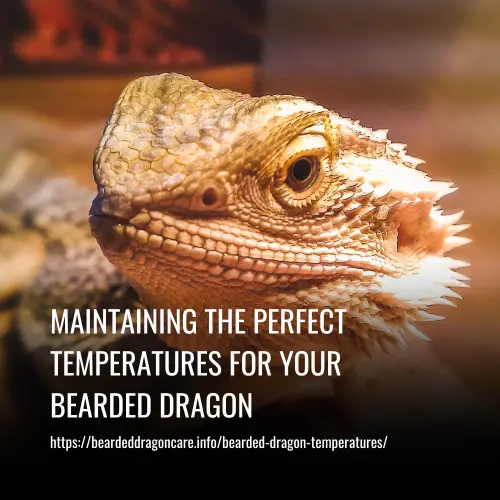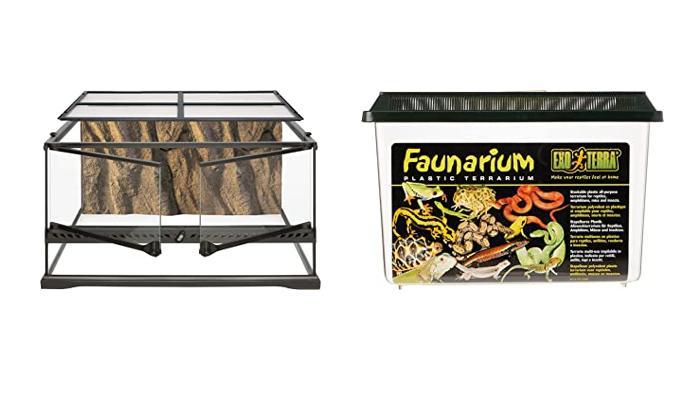Bearded dragons need ultraviolet (UV) lighting for physiological and behavioural well being. Ultraviolet lighting is not only needed for Bearded dragons to see better, but also aids in calcium absorption.
The ultraviolet light spectrum can be divided into UV-A, UV-B and UV-C. Image from aetaire.com
When looking at the spectrum of light emitted by the sun, only a small portion is visible to humans. One might recall the light spectrum (or the colours of the rainbow) from school, namely red, orange, yellow, green, blue, indigo, violet. Humans tend to see all these basic colours, but our eyes are not adapted to see the two extremes – the very short wavelengths called ultraviolet and very long wavelengths called infrared.
Ultraviolet rays are light with wavelength of less than 400 nm. It can be divided further into UV-A, UV-B and UV-C. Unlike humans, Bearded dragons can actually see into the UB-A spectrum of light. The UV-B spectrum is also very important for these, and other sun-basking lizards.
Why bearded dragons need UV light?
Bearded dragons need UV light to stay healthy and happy. Being in the wild, they get natural sunlight that provides them with the necessary ultraviolet (UV) rays. These rays help absorb vitamin D3, which is essential for their overall physical and psychological health.
Without having access to UV light, bearded dragons cannot regulate their own bodies. It leads to deficiency in vital vitamins and can cause many types of health issues such as skin lesions, poor bone growth, muscle wasting, and more. In short, it is essential that bearded dragons have access to UV light if they are to remain in a healthy condition.
Do Bearded Dragons Need Both UVA and UVB?
Bearded Dragons absolutely need both UVA and UVB wavelengths in their habitat in order to be healthy and happy. UVA is necessary to regulate behaviors such as eating, mating and movement.
It’s also important for facilitating positive social interactions between dragons and helping them recognize each other. UVA light signals to beardies that it’s daytime, which encourages them to become active, including feeding, basking, socializing, exploring around their habitat, and reproducing if they choose to do so.
UV-A is more for sight
Photograph with and without UV enhancement. If humans were able to see the UV-A spectrum (315 – 400 nm wavelenghts), this is more or less what flowers will look like. Image from WiseGeek.com
The image above shows an ultraviolet enhanced photo of a flower. Generally much more details are visible. By being able to see the UV-A spectrum, Bearded dragons see more details and are for example able to distinguish better between smaller items such as food.
UV-B is more for calcium absorption
Calcium is absorbed through the intestines (with food) and plays a vital role in nerve and muscle function. Calcium is also stored in our bones. In order to be able to absorb calcium, vitamin D3 plays a vital role. If enough vitamin D3 is not supplied through the diet, e.g. from supplements (reasonable quantities) or from food (very small quantities), then not enough calcium will be absorbed. This is very often the case in Bearded dragons and can rapidly lead to metabolic bone disease. In Bearded dragons, vitamin D3 is produced by absorbing UV-B through the skin.
Health reasons
Apart from physiological well-being, skin diseases such as Yellow fungus disease is often diagnosed in Bearded dragons where the ultraviolet exposure were inadequate or absent. In theory, ultraviolet also serves as a natural disinfectant and will likely kill these, and other, micro-organisms.
Why is Vitamin D3 important for my bearded dragon?
Bearded dragons require Vitamin D3 for optimal health. It ensures that they are able to absorb essential minerals and nutrients, such as calcium, into their bones.
Without these vitamins, they could become deficient and eventually suffer from a dangerous condition known as metabolic bone disease. This can be avoided by providing the right UV light, and/or supplements such as calcium powder that contain Vitamin D3.
It’s highly recommended for any bearded dragon owner provide their pet with the necessary vitamins in order to ensure a safe and healthy life for them. Vitamin D3 helps ensure that your reptile has all of the essential minerals that are necessary for maintaining good health and preventing serious illness later down the line.
How much UVB does my bearded dragon need?
When it comes to how much UVB your bearded dragon needs, the most important factor is making sure you choose a bulb that closely replicates natural sunlight. The wrong bulb can lead to health issues, so make sure you look for one that has been properly tested for effectiveness.
Using a UV meter (like the Solarmeter 6.5 UV Index Meter) is the best way to compare different bulbs and find one that will deliver the necessary level of UVB light to your bearded dragon. Research shows that they need a UV index between 4 and 6 in order to be healthy and the meter will help ensure you get this right.
So when looking for the right UV light for your dragon, don’t just rely on advertised output percentages – take the time to measure each lamp with a UV meter before making your decision!
Do Bearded Dragons Need UVB at Night?
It’s important to remember that Bearded Dragons do not require UVB lighting at night. Wild Bearded Dragons get their necessary exposure to UV rays from the sun during the day, but since your pet can’t make use of natural sunlight in the same way its wild counterpart does, you’ll need to provide a UV light in their habitat.
However, it is important to turn off the light during the night and not leave it on 24/7. This is because leaving it on can lead to overexposure to UV rays as well as disrupt their sleep cycles.
So although your Bearded Dragon needs a UV light for proper health and wellbeing, it should only be used during daylight hours and turned off at night.
The below table outlines the hours needed across the seasons.
Bearded Dragon Hours Of Heat & Light Required Daily
| Season | Hours Of Heat & Light (Per Day) |
|---|---|
| Winter | 10 |
| Spring | 12 |
| Summer | 14 |
| Autumn | 12 |
Source:https://totalbeardeddragon.com/bearded-dragon-uvb-frequently-asked-questions/
How Many Hours A Day Do Bearded Dragons Need UVB?
Bearded Dragons need UVB for healthy growth and behavior, mimicking their most natural environment. Providing them with 10-14 hours of UVB exposure a day is ideal to ensure their health. During the summer, 14 hours of UVA and light should be provided and in the winter, the number drops down to around 10 hours of exposure.
For autumn and springtime, somewhere in between those two figures is ideal at around 12 hours of UV exposure. You can easily maintain your Bearded Dragons seasonal cycle by matching it to your own seasonality and using a timer to manage the UV bulbs.
This will help ensure consistent access to UVB that your Bearded Dragon needs so they remain as healthy as possible.
What is the best UV light for my bearded dragon?
When it comes to finding the best UV light for your bearded dragon, the Arcadia T5 lighting range is a top choice. Not only do their high output linear tubes provide a bright, natural, and safe level of ultraviolet and visible light that replicates natural sunlight meaning your dragon can thrive; they are affordable thanks to the Arcadia ProT5 plug and play kit, which includes the tube, reflector, and controller.
Additionally, you receive a complimentary link cable which eliminates the need for more power outlets, enables you to use multiple ProT5 kits with JungleDawn-Led Bar, and still works even if you possess distinct bulbs and controllers as long as you have a reflector. Bottom line: for the best UV light for your bearded dragon look no further than the Arcadia T5 lighting range!
Where should I put my UV light?
When considering where to place your UV light for your bearded dragon, you should keep in mind that brighter lamps placed further away from their habitat are the safest choice. Anything too close could be hazardous and cause eye damage due to the glare of the light.
Bearded dragons are used to living under bright overhead sunlight, and have developed a protruding orbital bone structure designed specifically to protect them from exposure. However, this does not protect against artificial lights installed horizontally in their vivarium.
We recommend using linear tubes such as Arcadia ProT5 which should be installed on the ceiling and then building up a basking area from the floor with rocks or decoration. This will allow your dragon to access the lamp at an optimum distance and create a fixed basking zone so they can self-regulate their exposure within safe levels of UVB radiation.
Does the size of my vivarium impact what UV Light I need?
The size of your vivarium does play a role in determining which UV light is the best fit for your needs. Generally, you want the length of the light to be around 60-80% of the total length of the vivarium with the lamp positioned towards the warm end where your basking lamps are installed. However, it must be at least long enough to accommodate an animal from nose to vent.
In this case, our best seller for bearded dragons is the Arcadia 39w 12% ProT5. This lamp easily fits a minimum recommended vivarium size of 120x60x60cm (4x2x2ft) while providing a UV Index of 4-6 when placed between 30-45cm away from the animals head and sitting at its highest point within your basking zone.
Does basking distance matter?
Yes, basking distance does matter when choosing a UV light for your bearded dragon. Depending on the size of your vivarium, you should choose the appropriate combination of output and distance in order to provide your pet with the UVB levels it needs.
For taller vivariums, like those that are 60cm or taller, a higher output lamp such as the 14% Arcadia Dragon Lamp would do best at a basking distance of 45-60cm. For smaller or lower vivariums, like those that are less than 60cm tall, you should consider a lower output system such as Arcadia T8 12% or T5 6%, with a recommended minimum basking distance of 25-30cm.
When selecting your UV light it’s important to keep in mind both the size of your vivarium and the basking distance in order to ensure that your bearded dragon will get the required amount of exposure.
Use our handy chart to checkout our top pick of UV lights for common vivarium sizes:
| Vivarium Size (cm) | UV Light (Our Top Pick) | Basking Distance |
| 120x60x60 | Arcadia ProT5 12% 39w | 30-45cm |
| 150x60x60 | Arcadia ProT5 12% 54w | 30-45cm |
| 120x60x90 | Arcadia ProT5 14% 39w | 45-60cm |
| 150x60x90 | Arcadia ProT5 14% 54w | 45-60cm |
FAQs
Can A Bearded Dragon Have Too Much UVB?
Beardies need a certain amount of UVB rays in their environment, and too many can be harmful to their skin, vision, and overall health. To ensure that they are getting the correct exposure, understand what type of lamp and bulb should be used in the enclosure.
How Long Can Bearded Dragons Go Without UVB?
A bearded dragon can survive up to two days in the absence of UVB light. However, without Vitamin D, they are not able to absorb calcium effectively and this can lead to diseases that weaken the bones and body, and even death in severe cases.
How Far Should The UVB Bulb Be From My Bearded Dragon?
Make sure the lamp and basking surface are at least 30 cm or 12 inches apart when housing a Bearded dragon so that they don’t come into direct contact.
How Many Watts Of UVB Does A Bearded Dragon Need?
This reptile light can be used in many different tanks, and it comes in 15-watt options with a 5% UVB output. However, we recommend seeking out a 10%-output for your bearded dragon.
How Often Should I Change My Bearded Dragons UVB Bulb?
Generally, the UVB light should be replaced after 3500 hours of use, but it can still be used for a while with reptiles that prefer low UV intensity.
Conclusion
In conclusion, UV lighting is a critical component for any bearded dragon’s health and well-being. Without it, they could suffer from serious health problems due to Vitamin D3 deficiencies or weak immune systems.
Thankfully, providing your pet with the appropriate UV lighting doesn’t have to be expensive or complicated! You just need to do your research and buy the best bulb for your specific needs.


